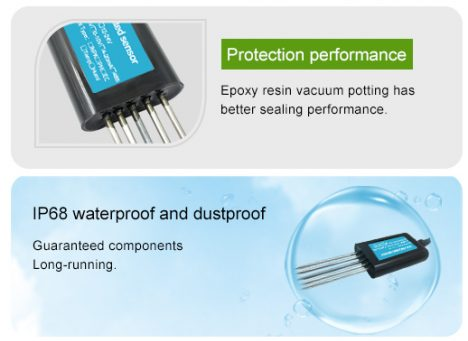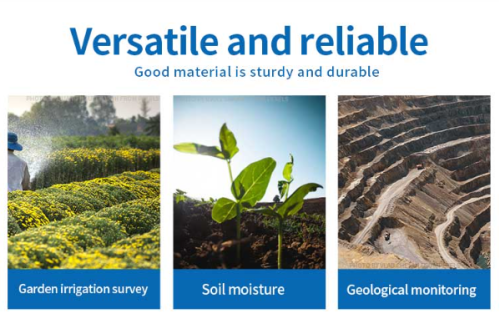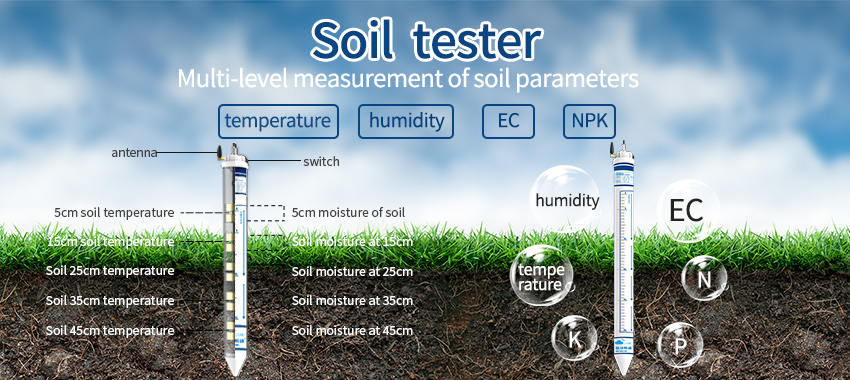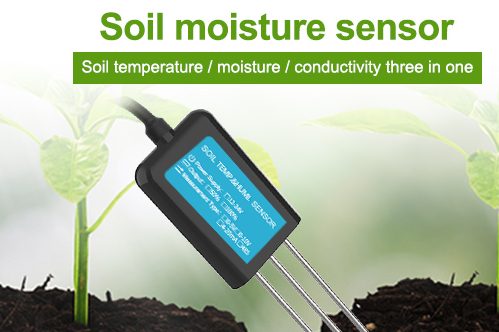Soil moisture sensor have become an essential tool in modern agriculture and environmental monitoring. These devices provide accurate and real-time measurements of soil moisture content, enabling farmers about water management, crop irrigation. In this article, we will explore the importance of soil moisture sensors, their working principles, types, applications, and future developments
Understanding Soil Moisture
Soil moisture refers to the amount of water in the form of liquid in the soil, which is a key factor affecting plant growth and nutrient availability. Soil moisture varies depending on several factors, such as precipitation, temperature, soil type, vegetation cover. Accurate measurement of soil moisture is essential for optimizing crop yields, conserving water resources, preventing soil erosion, and predicting weather patterns.

However, traditional methods of measuring soil moisture, such as manual sampling and laboratory analysis, are time-consuming, labor-intensive, and subject to errors and biases. Moreover, these methods cannot provide continuous and spatially explicit data, which are crucial for precision agriculture and environmental monitoring. Therefore, the development and deployment of soil moisture sensors have become increasingly important for improving agricultural productivity and sustainability.
Working Principles of Soil Moisture Sensors
Soil moisture sensor work by measuring the electrical or mechanical properties of the soil that are affected by its water content. There are several types of soil moisture sensors, each with its advantages and limitations, depending on the application and the required accuracy, resolution, and durability.
Some common types of soil moisture sensors include:

Tensiometers: Tensiometers measure the soil matric potential, which is the energy required to extract water from the soil pores. They consist of a ceramic cup connected to a vacuum gauge via a water-filled tube. As the soil dries out, the water in the tube is drawn up into the cup, creating a negative pressure that reflects the soil moisture status. Tensiometers are simple, reliable, and sensitive to small changes in soil moisture but require regular maintenance and calibration.
Time Domain Reflectometry (TDR): TDR sensors measure the travel time of an electromagnetic pulse through the soil, which depends on the dielectric constant of the soil, which in turn depends on its water content. TDR sensors consist of two or more metal rods or waveguides inserted into the soil and connected to a transmitter and receiver. TDR sensors are accurate, non-destructive, and relatively insensitive to soil salinity and texture but may be affected by temperature and compaction.
Capacitance sensors: Capacitance sensors measure the capacitance of the soil, which is the ability to store electrical charge and is proportional to the dielectric constant of the soil, which in turn depends on its water content. Capacitance sensors consist of two or more electrodes embedded in the soil and connected to an oscillator circuit. The sensors are inexpensive, easy to install, and suitable for large-scale monitoring but may be less accurate than other sensors.
Neutron probes: Neutron probes measure the neutron population in the soil, which decreases as the soil moisture increases due to hydrogen atoms capturing neutrons. Neutron probes consist of a radioactive source and a detector inserted into the soil and separated by a known distance. The number of neutrons detected is inversely proportional to the soil moisture content, and the relationship is calibrated using standard samples. Neutron probes are highly accurate and can penetrate deep into the soil but require special permits, handling, and safety precautions.
Applications of Soil Moisture Sensors
Soil moisture sensor have a wide range of applications in various fields, where accurate and timely information about soil moisture is crucial for decision-making and planning. Some typical applications of soil moisture sensors include:

Precision agriculture: Soil moisture sensors help farmers optimize irrigation scheduling, fertilization rates, and planting dates based on the actual water needs of crops and the variability of soil moisture within fields. This leads to increased crop yields, reduced water consumption, and improved resource efficiency.
Environmental monitoring: Soil moisture sensors help researchers and policymakers monitor the hydrological cycle, detect droughts and floods. This leads to better-informed decisions about water management, land use, and conservation practices.
Forestry and natural resources management: Soil moisture sensors help foresters and ecologists understand the water balance of forests . This leads to sustainable forest management practices and biodiversity conservation.
Civil engineering and infrastructure: Soil moisture sensors help people design and maintain roads, buildings to soil moisture fluctuations. This leads to safer and more durable infrastructure and reduced maintenance costs.
Future Developments in Soil Moisture Sensors

Integration with IoT : Soil moisture sensors are likely to become more connected and intelligent, using Internet of Things (IoT) to collect. This will enable faster and more accurate detection of soil moisture changes, predictive modeling.
Miniaturization and automation: Soil moisture sensors are likely to become smaller, lighter, and more autonomous, allowing for easier deployment . This will also facilitate the integration of soil moisture sensing with other sensing and monitoring technologies.
Non-invasive and remote sensing: Soil moisture sensor are likely to adopt new sensing modalities that do not require physical contact. This will enable safer and more efficient measurement of soil moisture in challenging or inaccessible locations.
Low-cost and sustainable solutions: Soil moisture sensor are likely to become more affordable and environmentally friendly, using renewable energy sources, recyclable materials, . This will promote wider adoption and accessibility of soil moisture sensing technologies, especially in developing countries and marginalized communities.
Conclusion
In conclusion, soil moisture sensors are vital tools for improving agricultural productivity, environmental sustainability, and climate resilience. By understanding the working principles, types, applications, and regulatory frameworks of soil moisture sensors, we can better appreciate their importance. With the continuous advancement of technology, the demand for soil moisture data continues to grow.
